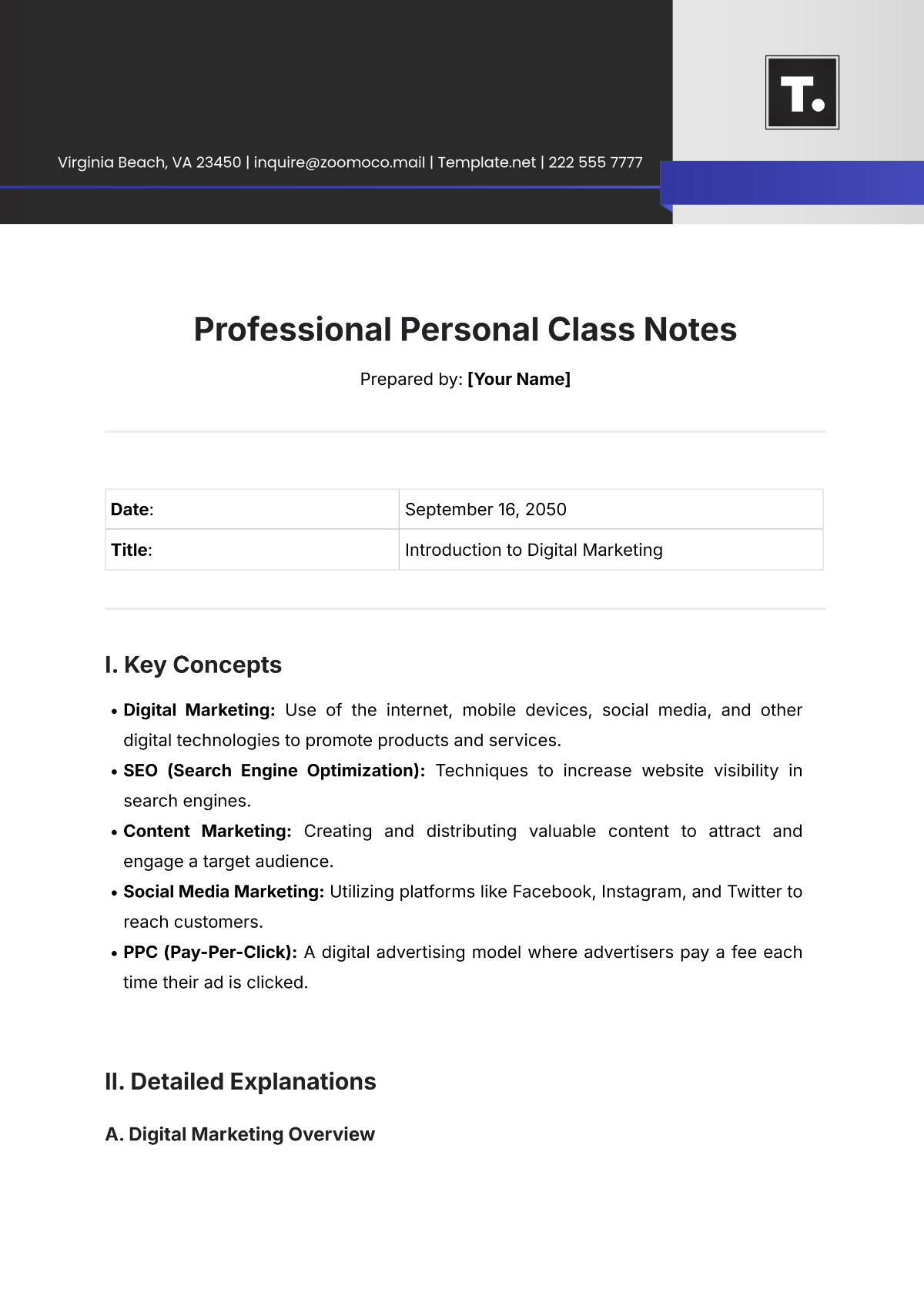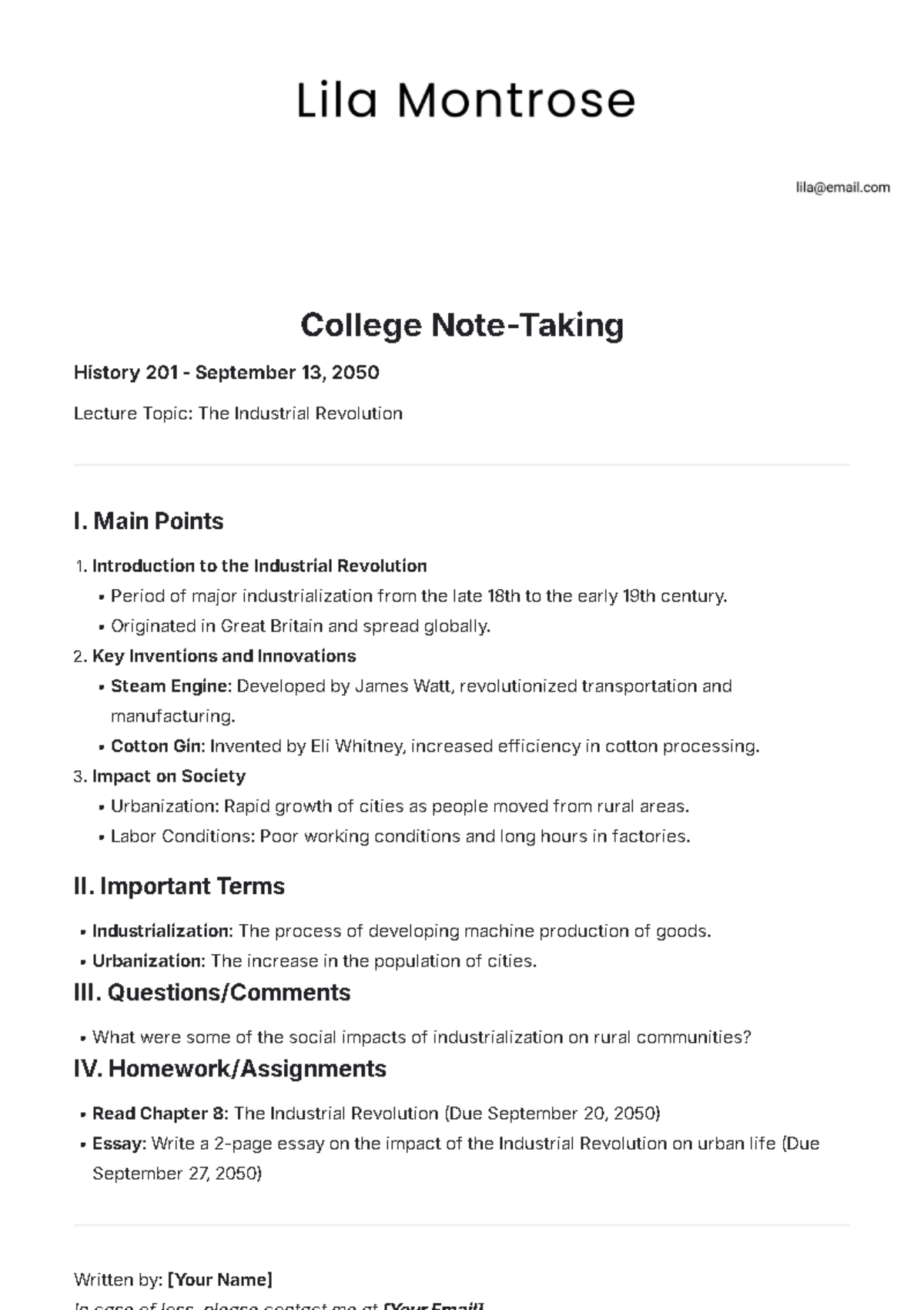Study Class Notes Layout
Prepared by: [Your Name]
Subject: | Introduction to Economics |
Date/Time: | November 22, 2024 | 10:00 AM - 11:30 AM |
I. Key Points/Topics Covered:
What is Economics?
Definition: Economics is the study of how people make choices to satisfy their needs and wants with limited resources.
Scarcity and Choice
Scarcity: Limited availability of resources to meet unlimited wants.
Choice: Decision-making process to allocate resources effectively.
Basic Economic Problem
The problem of scarcity forces individuals and societies to make choices on how to best allocate resources.
Types of Resources
Land, Labor, Capital, and Entrepreneurship.
Microeconomics vs. Macroeconomics
Microeconomics: The study of individual economic units, such as households and firms.
Macroeconomics: The study of the economy as a whole, focusing on national and global economic issues.
II. Definitions/Terms
Opportunity Cost: The next best alternative forgone when making a decision.
Supply and Demand: A fundamental economic model explaining how prices and quantities are determined in a market.
Market Equilibrium: The point at which supply equals demand.
III. Examples/Illustrations
Example of Opportunity Cost: If you spend $50 on a movie ticket, the opportunity cost is the concert you could have attended instead.
Supply and Demand Graph: A graph showing the relationship between the price of a product and the quantity demanded and supplied.
IV. Summary
In today's class, we introduced the basic concepts of economics, focusing on scarcity, choice, and the role of resources. We explored the difference between microeconomics and macroeconomics, as well as key terms like opportunity cost, supply and demand, and market equilibrium. These concepts are fundamental to understanding how economies function.
V. Questions/Discussion
How does scarcity impact decision-making in different sectors of the economy?
What are some real-life examples where opportunity cost plays a role?
How can government policies affect supply and demand in a market?

















































